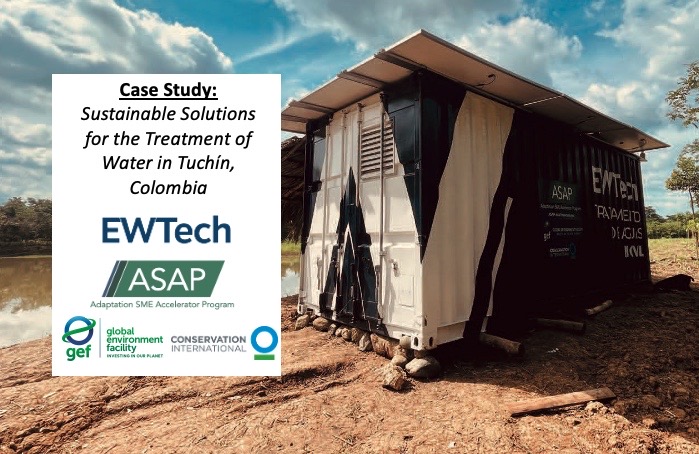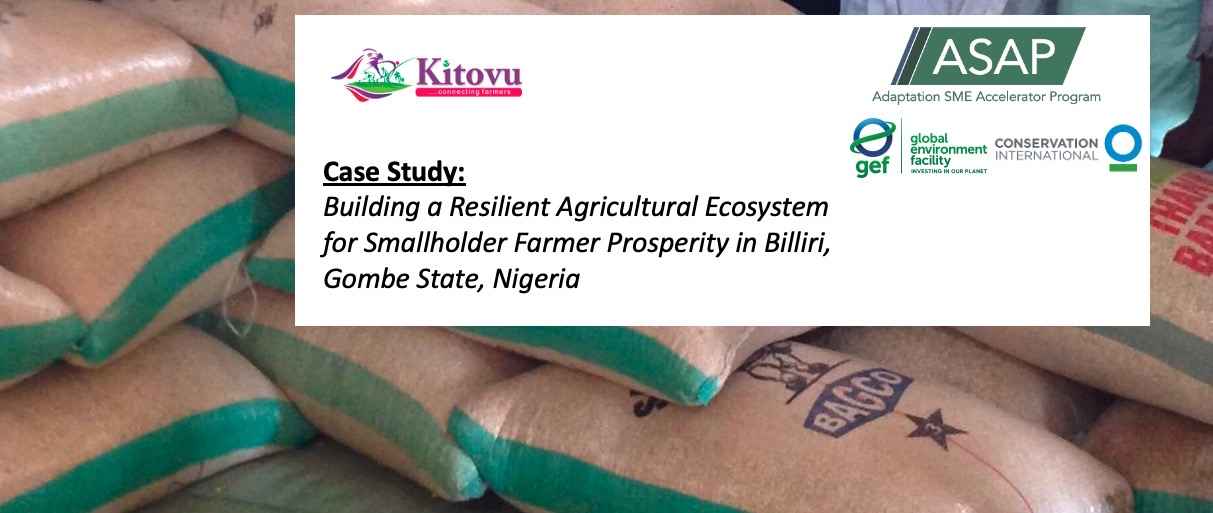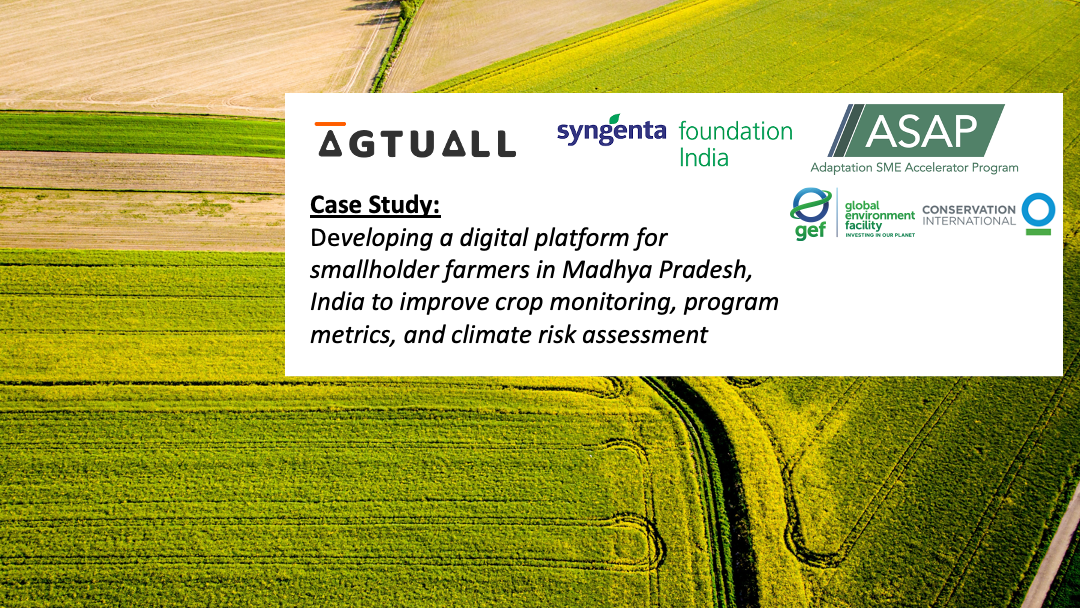September 10, 2020
First “Taxonomy” identifying companies that support adaptation to climate change released globally to catalyze global investment in climate adaptation and resilience

Adaptation SME Accelerator Project (ASAP) releases Adaptation Solutions Taxonomy, identifying solutions from private companies that support climate adaptation and resilience
NEW YORK, 10 September 2020 – The Lightsmith Group (“Lightsmith”) today released the ASAP Adaptation Solutions Taxonomy (“ASAP Taxonomy”). This is the first peer-reviewed set of definitions and eligibility criteria specifically focused on climate adaptation solutions being offered by private sector companies.
The ASAP Taxonomy was developed through the Adaptation SME Accelerator Project (“ASAP”), which is supported by the Special Climate Change Fund (SCCF) of the Global Environment Facility, Conservation International, and the Inter-American Development Bank and IDB Lab. It builds upon existing definitions and international standards around climate finance, such as the European Union’s Sustainable Finance Taxonomy, the Intergovernmental Panel on Climate Change, the Task Force on Climate-related Financial Disclosures (TCFD), and the UNFCCC Climate Technology Centre and Network (CTCN) Taxonomy, among others, in order to foster harmonization and uptake. The ASAP Taxonomy has been reviewed by a panel of global experts and is actively being applied to identify hundreds of private companies across the globe that offer climate adaptation solutions.
“We need practical solutions to help us adapt to climate change now,” said Jay Koh, Managing Director of Lightsmith. A recent study by the University of Cambridge shows an additional $100 billion of global costs annually linked to extreme weather events – such as floods, heatwaves and droughts – can be expected by 2040. The UN Environment Program estimates the cost of adapting to climate change in developing countries alone could rise to $140 to $300 billion per year by 2030, and between $280 and $500 billion per year by 2050. Despite the fact that 75% of all national climate plans under the Paris Agreement reference climate adaptation, adaptation received less than 6% of the total $579 billion of climate finance in 2017/2018, with perilously little from the private sector, according to the Climate Policy Initiative.
“Identifying companies that can help manage drought, flood, wildfire, supply chain disruption, disease, and other climate impacts is a critical first step to building resilience to climate,” added Koh. “Most of these companies do not call what they do ‘climate change anything’ but if we can find them, we can invest in and scale up their solutions as the challenge of climate change grows.”
ASAP recognizes the important role that small and medium-size enterprises (“SMEs”) can play in supporting climate adaptation. SMEs generate at least 45% of employment and as much as 33% of GDP in developing countries. The ASAP Taxonomy offers a systematic approach to identify SMEs that produce technologies, products, and services that support adaptation to climate change (“Adaptation SMEs”) and enables investors and governments to target investment and support.
“The timing of the new ASAP taxonomy is crucial. With SMEs in developing regions and especially Latin America and the Caribbean confronting both the economic fallout of the pandemic and worsening climate impacts, we should take full advantage of this new taxonomy to support them to continue to capitalize on the business opportunities to develop solutions for climate adaptation and resilience,” said Graham Watkins, Climate Change Division Chief of the Inter-American Development Bank.
The ASAP Taxonomy specifically focuses on SMEs in developing countries but can be easily extended to apply to businesses of all sizes, operating in all geographies. The ASAP Taxonomy is comprised of (i) a definition of an “Adaptation SME”, (ii) eligibility criteria to determine what types of companies qualify as an “Adaptation SME”, (iii) classification systems for climate adaptation solutions, and (iv) a results framework to measure, monitor and report on climate adaptation- related outcomes.
The ASAP Taxonomy can be used by investors, funders, companies, and other stakeholders to:
- Identify climate adaptation investments, thereby enabling more accurate tracking and reporting;
- Sets out a menu of classification approaches for categorizing, tracking, measuring and reporting climate adaptation solutions based on the technology, product, service provided;
- Inform companies on how their solutions may support climate adaptation and resilience;
- Provide initial guidance on approaches for measuring companies’ contributions to climate adaptation; and;
- Create a framework that can be used to align climate adaptation and resilience investment strategies with international standards and definitions.
“The release of ASAP Taxonomy is an important contribution to increasing private sector investment in climate change adaptation. Through a common language, the taxonomy will help classify climate adaptation business solutions and eventually support investors and SMEs understand market opportunities and track investments. The taxonomy’s focus on Adaptation SMEs will contribute to climate resilient and inclusive global economic recovery from the COVID-19 pandemic”, said Chizuru Aoki, Lead Environmental Specialist and Manager of the Least Developed Countries Fund and the Special Climate Change Fund.
“The ASAP Taxonomy is a significant step toward building the case for climate adaptation as an investment asset class and mobilizing much needed capital flows to adaptation-focused SMEs,” said Agustin Silvani, Senior Vice President of Conservation Finance at Conservation International (CI). “Both investors and businesses will benefit from a better understanding of the scope of climate adaptation investing. CI congratulates Lightsmith and all involved in the production of this valuable resource.”
By using the ASAP taxonomy, investors, funders, companies, governments, and policymakers can enhance the supply and uptake of climate adaptation solutions globally, and especially in the places where they are needed most.
The full ASAP Adaptation Solutions Taxonomy can be downloaded here.
============
ABOUT THE LIGHTSMITH GROUP
The Lightsmith Group is an investment firm pursuing superior returns by investing in companies that address critical societal needs. Lightsmith invests in growth-stage companies providing technology-enabled business services and solutions in the areas of energy, water, food and agriculture, and climate resilience. Lightsmith won the Global Innovation Lab for Climate Finance competition in 2016 for its concept for the first climate adaptation and resilience private investment strategy and received the Lab’s formal endorsement in September 2017. For more information on The Lightsmith Group, please see: www.lightsmithgp.com.
ABOUT THE GLOBAL ENVIRONMENT FACILITY
The Global Environment Facility (GEF) was established on the eve of the 1992 Rio Earth Summit to help tackle our planet’s most pressing environmental problems. Since then, the GEF has provided close to $20.5 billion in grants and mobilized an additional $112 billion in co-financing for more than 4,800 projects in 170 countries. Through its Small Grants Programme, the GEF has provided support to nearly 24,000 civil society and community initiatives in 133 countries.
The GEF supports adaptation to climate change in developing countries through the Least Developed Countries Fund (LDCF), which supports urgent, medium and long-term adaptation needs in least developed countries (LDCs), and the Special Climate Change Fund (SCCF), accessible by all developing countries. Established in 2001 at United Nations Climate Change Conference COP7, the two funds also support implementation of the Paris Agreement.
ABOUT THE INTER-AMERICAN DEVELOPMENT BANK
Since 1959, the Inter-American Development Bank has provided financial and technical support to countries in Latin America and the Caribbean working to reduce poverty and inequality, improve health and education, and advance infrastructure. Its aim is to achieve development in a sustainable, climate-friendly way. The IADB provides loans, grants, and technical assistance with a current focus on three development challenges – social inclusion and equality, productivity and innovation, and economic integration – and three cross-cutting issues – gender equality and diversity, climate change and environmental sustainability; and institutional capacity and the rule of law. IDB and IDB Lab, the innovation laboratory of the IDB Group, jointly supported the ASAP Taxonomy under the ProAdapt Program. Click here to learn more about the Bank’s current Institutional Strategy.
ABOUT CONSERVATION INTERNATIONAL
Conservation International works to protect the critical benefits that nature provides to people. Through science, partnerships and fieldwork, Conservation International is driving innovation and investments in nature-based solutions to the climate crisis, supporting protections for critical habitats, and fostering economic development that is grounded in the conservation of nature. Conservation International works in 30 countries around the world, empowering societies at all levels to create a cleaner, healthier and more sustainable planet. Follow Conservation International’s work on Conservation News, Facebook, Twitter, Instagram and YouTube.
MEDIA CONTACTS:
Serena Shi
Senior Associate
The Lightsmith Group
Serena.Shi@Lightsmithgp.com
Christian Hofer
Senior Communications Officer
Global Environment Facility
chofer@thegef.org
+1 (202) 413-4185
Jessica Brown
Media Relations Specialist
Conservation International
jbrown@conservation.org
+1 (734) 748-7361
José Luis Lobera
Inter-American Development Bank
joseluisl@iadb.org
+1 (202) 623-2846


